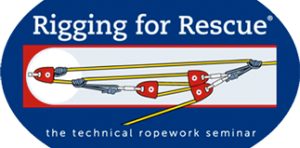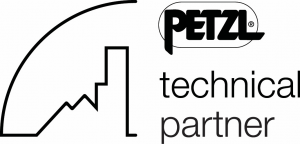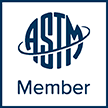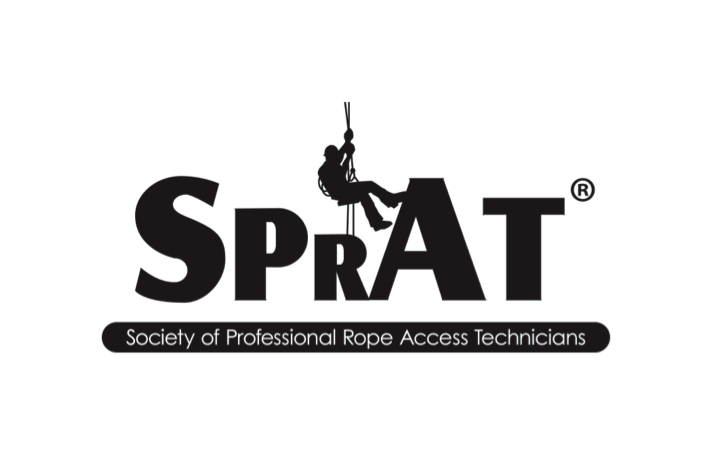Denali National Park
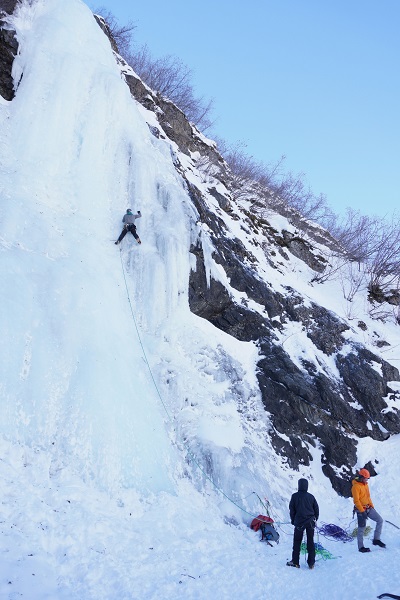
Weather in the desert southwest is decidedly warm and springlike this time of the year, but there is still an abundance of snow and ice up in the great white north of Alaska. Conditions this year were perfect for waterfall ice outside of Denali National Park. Our annual training with the climbing ranger cadre from Denali NPS included a focus on team-based movement skills on snow and ice. We completed a couple of different multi-pitch waterfall ice ascents to a rescue scenario, followed by applying safe & efficient descending techniques – both with and without a litter. The Denali NPS rangers are responsible for rescue throughout Denali National Park, but their primary focus end up being on the annual spring climbing traffic on Denali itself. The terrain on a peak like Denali can be quite complex ranging from crevasses to icefalls, big snow/ice faces, traversing features, rock walls, and of course the omnipresent cold and altitude. Some of the rope rescue problem-solving on Denali involves the use of specialized equipment such as the 1000m rope cached at high camp at 17,000 feet (that’s right, a full kilometer of rope – unknotted!). Denali is perhaps the ultimate in mountain rescue terrain insofar as the complexity and challenges that are presented to the respondents. It continues to be our privilege to work and train with these exceptional rescue practitioners and alpinists.
Moab Fundamentals
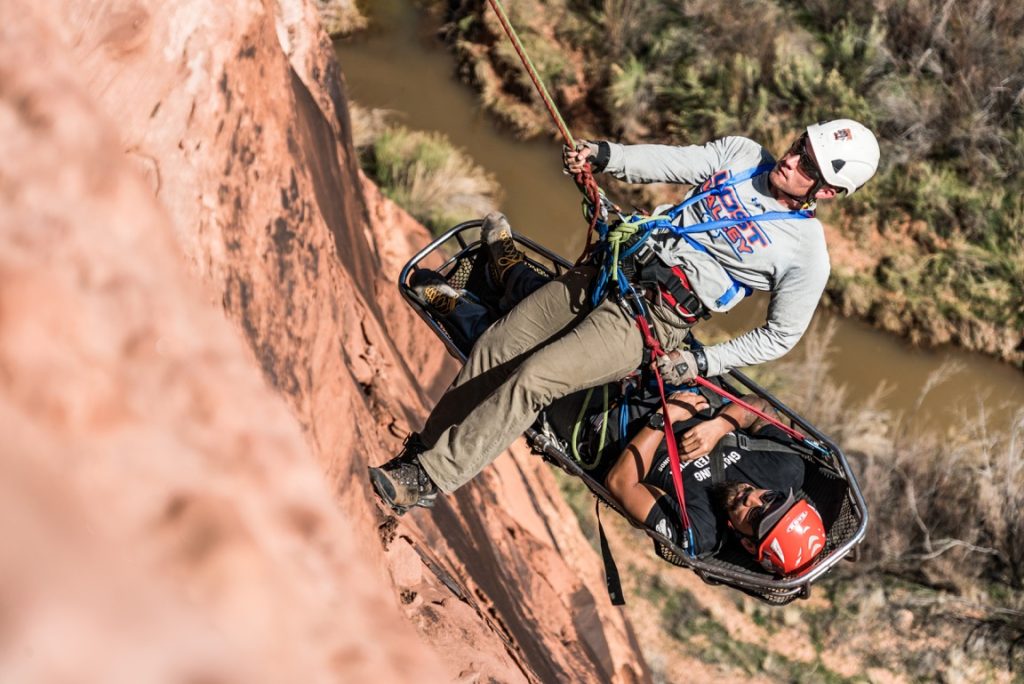
We recently completed a Fundamentals Seminar in Moab, Utah. The canyons surrounding Moab offer a truly magnificent location for developing and refining rope rescue skills. This program marked the beginning of Rigging for Rescue open enrollment Fundamental Seminars in Moab. In addition to perfect field training locations and amazing weather, participants and instructors alike are able to spend the evenings rock climbing, biking, or just enjoying all Moab has to offer. We look forward to offering additional training opportunities at this unique destination. The next scheduled Fundamentals Seminar in Moab, UT is on October 23-27 2017 http://riggingforrescue.com/program/fundamentals-7/. We hope to see you in the desert! Rigging for Rescue instructor Kevin Koprek teaching in Moab Photo by Xander Bianchi xanderbianchi.com
Grand Teton National Park

We recently returned from a Rigging for Rescue seminar on contract with the Jenny Lake climbing ranger cadre of Grand Teton National Park. It is always a privilege to train in beautiful settings such as the Tetons. Additionally, the Jenny Lake ranger cadre is a very experienced crew of practitioners that bring a lot of skills to the table. The discussions and exploration of topics/techniques is generally much richer in depth and breadth, given the vast amount of collective rescue experience in such a team as the Jenny Lake rangers. Each day we traveled by boat across Jenny Lake itself in order to access the granite crags in Cascade Canyon, near the base of Baxter Pinnacle. We covered a bit of refresher material, some new command & control ideas, pickoffs, litter work, and a big Guiding Line that traveled over the rugged talus field adjacent to the popular Practice Rocks cragging area. 2-attendant litter work above Jenny Lake The ever reliable 540 Rescue Belay device Pickoff stations near Hidden Falls Helmets and PFDs – safety first! The Tetons Vertical litter orientation for high angle
RfR Specialty Techniques – Ouray, Colorado

Our recent spring open enrollment offering of RfR Specialty Techniques included a diverse group of practitioners. We had folks from mountain rescue teams, special operations community members, and even a participant from the Danish navy. Topics and techniques explored included: a detailed discussion of artificial high directionals including the construction and use of a Sideways A-Frame bipod a mid-face litter pickoff the Kootenay Highline System in a spectacular location across the Ouray Ice Park gorge the San Juan Pickoff along with multi-pitch transitions and much more Kootenay Highline System Mid-face litter pickoff Station management at a hanging belay Multi-pitch transition using the San Juan Pickoff Sideways A-Frame The last exercise was particularly challenging as it included a hanging belay transition – similar to what you would find in a big wall setting. When you cannot unweight the system via a stance, all of the tension transfer tools in your toolbox need to be well applied and carefully considered. In a hanging belay, it is very “self critiquing” when you don’t get the steps just right.
Avalanche rescue course

This past week in Silverton, several members of the Rigging for Rescue instructor cadre got the unique opportunity to participate in an avalanche rescue course instructed by Swiss avalanche rescue guru Manuel Genswein. It was a “pro” level course designed for ski patrollers, forecasters, and mountain rescue personnel intent on increasing their depth and breadth of knowledge in avalanche rescue. Manuel comes from a background of electrical engineering and has had a role in designing some of the more innovative avalanche beacons in the industry. When he is instructing on the topic of beacons, it seems as if he has 457 kHz flux lines radiating out of his brain. His command of the material is impressive. The course focused exclusively on avalanche rescue procedures. This is unique within the realm of avalanche awareness education. Typically, an avy awareness course will cover a wide range of skill sets ranging from beacon use, to snow stability evaluation techniques, as well as decision-making as it relates to skiing or traveling in avalanche prone terrain. All important considerations. However, this course limited the scope of focus to just the rescue side of the problem-solving – i.e. how to shovel more efficiently, multiple burial detection, and a whole host of other topics. It was a superb course and we all felt privileged to be able to attend. Following the pro course, Manuel put on a recreational course both in Durango as well as Ouray. The rec course in Ouray was co-sponsored by Ouray Mountain Rescue and the same crew of RfR instructors all pitched in to act as volunteer proctors for the day. We had 32 participants attending a free clinic on avalanche rescue. It was a great turnout and participants were glowing about the information they received from one of the top educators in the subject of avalanche rescue. Following the clinic, we took Manuel up on a short ski tour in the San Juan’s. He had a 6am flight to Canada the next morning. Manuel instructs in 27 countries around the world and his techniques have been adopted by the International Commission for Alpine Rescue (IKAR). His educational style and curriculum has a lot of parallels to RfR: critical thinking, systems analysis, and empiricism. Thank you Manuel for an inspiring week of avalanche rescue education! Ski tour on Red Mtn Pass Manuel with RfR instructors Kevin and Leo
Waterfall Ice Workshop

We just wrapped up our first RfR Waterfall Ice Workshop for 2016. We had a diverse group of participants from the US and Canada. The Canadians from Newfoundland continued to remark how “amazing” it was that we had yet another day of Bluebird sunny weather. And we continued to inform them that this was perfectly normal in Colorado… The workshop started with a base foundation of movement skills on ice and then transitioned into a critical evaluation of climbing belay techniques as well as companion rescue skills and multi-pitch strategies on an ice climb. By the middle of the week we moved into team-based rescue skills on ice including the San Juan pickoff as well as some litter work. The wrap-up exercise was a multi-pitch ascent to a mock patient location followed by a 5-pitch lower back down to flat ground. An excellent training exercise to cap off a superb week of rescue work in the waterfall ice environment. Counter-balance rappel pickoff Multi-pitch lowers down an ice climb Leading steep ice Transitioning to low angle terrain Team approach to base of ice Station transition using v-thread anchors for Main & Belay
ITRS wrap-up and some food for thought
It has been a little more than a month since we returned from attending the International Technical Rescue Symposium in Portland, Oregon. This year featured a variety of excellent presentations on topics ranging from Two Tensioned Rope Systems, to sharp edge testing, Prusiks, how dirt may affect your rope, and the MPD – just to name a few. John Morton’s presentation on theoretical breaking strengths of trees was a particularly excellent presentation. John’s work was inspired by conversations and collaboration with Mark Miller of Rigging for Rescue. Mark tragically passed away in January, 2015 in an ice climbing accident. He and John had exchanged ideas on how to go about theorizing breaking strengths for trees. John offered a user-friendly model that theorized what many end-users have suspected for quite some time – live trees are very robust anchors and often we can safely utilize trees much smaller than the tried and true “helmet diameter” tree size. This was my 14th consecutive ITRS. One of the things that I have continued to observe over the years is that a lot of the presentation material tends to focus on some combination of materials, devices, and system integrity (or lack thereof). The evidence provided is often either a series of slow pull examinations or drop tests. At Rigging for Rescue, we have regularly presented at ITRS on topics that would meet that very same description. Recently, however, we have begun to take a much stronger interest in evaluating the human factor and how that interfaces with the systems and devices that we employ in rope rescue. Typically, when we talk about identifying weak links in a system the focus is often from an engineering perspective (e.g. a component part at X kN of breaking strength). But a review of incident and accident reports from a variety of industries (aviation, automotive, forestry, etc.) rarely reveals the catalyst being a material or device. Oftentimes, contributing factors are directly linked to the human being(s) operating the system – loss of situational awareness, poor training, poor supervision, poor communication, etc. In rope rescue, we have a wide variety of available materials, devices, and systems. The good news is that the vast majority of these are well constructed and well vetted through a combination of manufacturing specs, standards, testing, and anecdotal use. The gear is good! I think that the future breakthroughs for increasing the safety of rope rescue operations will not be a fancier widget. The meaningful breakthroughs will be increasing the levels of understanding of the human factors associated with these various systems/devices. It is my hope that we continue to see more of these types of test series and presentation topics at future ITRS gatherings. In that vein, here are a couple of really good links to talks that would be well worth your time to check out: Mike Lauria’s podcast focuses on operational leadership and decision making: https://www.youtube.com/watch?v=IALiRvhF7Qc Stuart Firestein’s TED Talk addresses how science is pursued versus perceived: https://www.ted.com/talks/stuart_firestein_the_pursuit_of_ignorance?language=en Our own Rigging for Rescue training seminars continue to address the finer points and nuances of systems, devices, and the like. But as critical thinking rope rescue practitioners, we are continuing to be proactive about weaving in themes of decision-making, leadership, risk management, and overall awareness of the human factors that may be affecting our system integrity.
Bad Ass Pencil

The early season ice climbing sendfest continues unabated with another day in Eureka. On Wednesday, the objective was Stairway to Heaven. The climb was super fat and the ice very sticky. Yesterday, Jim and I made a return visit to Eureka with the intent of climbing Hoser’s Highway. We had both previously climbed the route in past seasons, but it does not form up consistently every year and reports were that it was in good shape. However, while racking up in the parking lot at Eureka we noticed that Bad Ass Pencil appeared to be in climbable condition. Additionally, there was another sun-rotted pillar further up slope that also appeared to be in decent shape. Both of these were absent on our local climbing tick list, so we quickly abandoned our original objective and instead slogged up the slope towards the pillars. We did the sun-rotted one first. It won’t be around for long if the temps don’t cool down soon. The east facing aspect gets hits hard by the sun for a few hours in the AM. The second climb was the aptly named Bad Ass Pencil. It appeared to be in dubious condition at first glance, but it actually climbed and protected very well. Steep and pumpy! Stemming the dead vertical pillar Bad Ass Pencil
Pike ‘n Pivot technique
This is a re-publication of a previous post on Pike ‘n Pivot technique. There was a video issue on the old post. Pike ‘n Pivot is a technique developed by Rigging for Rescue in the mid 1990’s as a method for negotiating a 90 degree edge transition with no high directional. The technique greatly reduces the effort needed to execute a difficult edge transition using more traditional methods. The footage below shows a Pike ‘n Pivot edge transition during an open-enrollment seminar in Ouray.
Early season ice in the San Juan’s

The ice climbing conditions in the San Juan’s are excellent for this time of the year. We have had colder temps this late autumn and a steady cycle of storms to coat the backcountry in powder. Recently, Kevin and I sampled the local classic Dexter Falls. We may have even been the first party on it this season; the ice showed no evidence of previous traffic and was super sticky. Late last week, Rigging for Rescue conducted a 2-day workshop for the Ouray Ice Park ice farmers. We focused on work at height risk management considerations, a variety of descent/ascent systems for use with equipment, and a number of companion rescue scenarios for rescuing a fellow worker (or climber) while on rope. Check out the conditions in the Ouray Ice Park – a very good start to the ice making this year. Climber pickoff Practicing personal on-rope systems in the Ouray Ice Park Swinging leads on Dexter Falls On lead on Dexter Sticky ice on the final pitch – Dexter Falls
